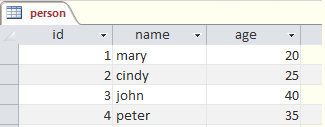Introduction
This chapter explains what XQuery is and introduces you to the heart of XQuery: the FLWOR expression.
XQuery is a superset of XPath. If you are not already familiar with XPath (in particular XPath 3.x), it is recommended to first read through the XPath 3.0 and 3.1 Training before proceeding with this training.
What is XQuery?
XQuery stands for XML Query Language.
The 'X' in XQuery comes from its roots in XML, the eXtensible Markup Language.
The 'Query' in XQuery comes from the fact that XQuery is used to both query and transform XML data.
XQuery is a superset of XPath, meaning that every valid XPath expression is also a valid XQuery expression.
Because XQuery is a superset of XPath it can also do more, including on the fly manipulation and construction of XML documents.
The heart of XPath is the FLWOR expression (pronounced 'FLOWER') . To those not familiar with XQuery, a FLWOR expression is very similar to an SQL Select statement.
The three examples below demonstrate the similarities between SQL and XQuery, and show how XQuery is used to both query and transform XML data.
example: SQL SELECT Statement - query database data
![]()
SELECT name FROM person WHERE age > 30;
result:'john' 'peter'
- This example demonstrates how an SQL statement is used to query data in a database table.
- The image above shows the contents of a database table named person which consists of columns named id, name and age.
- The SQL Select Statement selects the value in the name column from those records in the person table where age is greater than 30.
example: XPath FLWOR Expression - query XML data
![]()
for $i in /people/person where $i/age > 30 return data($i/name)
result:'john' 'peter'
- This first XQuery example demonstrates how XQuery is used to query XML data.
- The image above shows the contents of an XML file named people.xml which consists of a sequence of person elements.
- The XQuery FLWOR expression selects the value of the name child element from those person elements where age is greater than 30.
example: XPath FLWOR Expression - query and transform XML data
![]()
<html> <body> <table> { for $i in /people/person where $i/age > 30 return <tr><td> { data($i/name) } </td></tr> } </table> </body> </html>result:<html> <body> <table> <tr> <td>john</td> </tr> <tr> <td>peter</td> </tr> </table> </body> </html>- This second XQuery example demonstrates how XQuery can be used to both query and transform XML data.
- In this example direct element constructors are used to create the html tags (elements) which appear in the result.
- The content of the td element is generated by evaluating the expression contained within curly brackets i.e. { and }.
- An expression contained within { and } is known as an enclosed expression.
XQuery version history
There are three versions of XQuery:
- XQuery 1.0 became a W3C Recommendation on January 23, 2007.
- XQuery 3.0 became a W3C Recommendation on April 8, 2014.
- XQuery 3.1 became a W3C Recommendation on December 18, 2014.
There was no XQuery version 2 . XQuery version 3.0 followed XQuery 1 so that the version number of XQuery would remain aligned with the version number of the XPath specification (which was already version 3.0 at the time).
The latest incarnation of the XQuery specification XQuery 3.1 is comprised of three documents which specify the syntax, data model, and operators and functions respectively:

